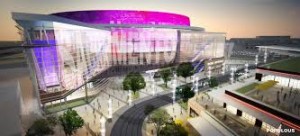This is Part One of a two-part series.
The unusually speedy approval of a new NBA arena for the Kings basketball team in the heart of downtown Sacramento leaves many details and unanswered questions on the table, including how this arena project possibly will be completed and ready for opening by 2015.
Approved by the Sacramento City Council, the latest plan uses overstated revenue projections, grossly overstated projected attendance numbers and city-owned parking garages to sweeten the finances. As with all of the previous schemes to keep the Sacramento Kings in town in a luxurious arena, neither city officials nor local news media have ever performed due diligence to expose the questionable business deal it will be for taxpayers.
Local media have been cheerleading the project, with little criticism or analysis. It’s another typical government-involved project, with bad numbers, pie-in-the-sky plans, lots of hype and no accountability.
Impacts on the city
A project of this magnitude will impact downtown parking, local businesses, housing and commercial property prices, traffic congestion and even air quality. Projects a fraction of this size are required to comply with extensive state mandated regulations, including Environmental Impact Reports and the state’s California Environmental Quality Act.
Many say that, given how Sacramento officials have already rammed through the term sheet approval in record time, they will also try to ram the development process through, without giving residents and businesses the standard allotted time to question the process and project. And given the California Legislature’s recent history working around CEQA regulations for politically favored projects, could city officials already be working to ensure this project also is exempted from the state’s strict environmental guidelines?
Sacramento CEQA exemption
I contacted Senate President Pro Tem Darrell Steinberg, D-Sacramento, to find out if he plans on sponsoring legislation for the Sacramento arena similar to AB 900 and SB 292, which were passed last year and streamlined the CEQA process for Los Angeles-area sports stadiums. AB 900 was a general bill and expires on Jan. 1, 2015. But SB 292 specifically was targeted at the $1.2 billion stadium for downtown Los Angeles being sponsored by the Anschutz Entertainment Group.
“It will be up to the government to decide if the project falls under the AB 900 criteria,” said Rhys Williams, Steinberg’s spokesman.
But in a later phone call, Williams said, “No plan was in place to fast track the stadium through CEQA, unless the project meets AB 900 criteria.” Williams also noted that Steinberg authored AB 900.
I also contacted Sacramento City Manager John Shirey to inquire about a CEQA exemption for the arena project. Shirey was not available, but spokeswoman Amy Williams said she hand’t heard of anything involving CEQA exemptions for the arena project, and said she would ask others working on the project for the city. I did not hear back from Williams.
Interestingly, I also contacted Anaheim city officials. Anaheim was in the running two years ago to acquire the Kings. Part of their proposal was to increase the size of the Honda Center indoor arena. Ruth Ruiz, Public Information Officer with Anaheim, forwarded the city-led Environmental Impact Report summary which found the Honda Center would not fall under CEQA guidelines because the expansion was only intended to enhance the design and services offered at the arena, and would not increase the maximum seating capacity.
Unnecessary financial risk
Arena opponents are concerned that Sacramento is opening itself up to risk it cannot afford. Eye on Sacramento, a public policy watchdog group, compared Sacramento to Stockton, which filed for bankruptcy protection after spending tens of millions of dollars on an arena and other publicly financed facilities.
Others are concerned about the increasing number of government projects will continue to be exempted from California’s unusually strict environmental regulations — regulations which have killed many private sector projects.
Part Two of this two-part series will be on the stadium and jobs creation.


